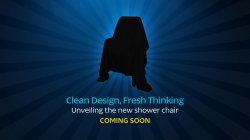
There’s no question lifting and handling are essential parts of care provision. Get it right, and users have more independence – which has a major impact on mental and physical wellbeing. Transfer quality also has far-reaching implications. For example, the effectiveness of specialist seating when it comes to postural support and pressure management is only as good as the transfer in.
However, OTs, care homes, specialist schools and hospitals face particular challenges when it comes to hoist specification, and it often feels like a balancing act between flexibility, functionality, and budget.
In this article, we address the common challenges that OT's face when looking at hoist specifications, and sit down with our resident
Q: Why is it so difficult to find the right hoist system for a particular user or environment?
Ben: It’s the interplay of factors, like structural considerations, room size and layout, user comfort, control, aesthetics and ease of installation.
On the structural side, ceiling hoists need to distribute the user’s weight effectively, which means the room has to be able to bear that weight. Depending on the ceiling and wall construction, this can be an issue. With some hoist systems you can work around this, but not all.
With regards to room size and layout, it can be challenging to find systems that work with low ceilings or across rooms with different heights – the lifting unit has to be small for there to be enough space. The GoLift is a good example of this. It can lift a user who weights up to 50st with a unit that’s 197mm x 197mm x 108mm (you can easily hold it in 2 hands).
There’s also an added layer of complexity when a unit is being replaced, because you need something compatible with existing track.
Q: The replacement issue is an interesting one. What are the considerations there?
Ben: The lifting unit is what generally needs replacing – the track has a much longer lifespan. If you have track configurations already, you want a replacement unit that will plug and play with the existing infrastructure. The issue comes because not all units are compatible with all track types.
It’s worth noting that this compatibility issue also comes up in multi-user environments where there may be different track types and configurations in different parts of the building.
To give you an idea, we’ve helped spec GoLift with Arjo, Guldmann, Liko, Prism and Joerns track because it has trolley adapters that make it easy to install and service with what the customer already has. You can also clip the GoLift unit on and off the track to use in different rooms, so you don’t need to invest in so many systems. This saves a great deal of time and money.
Q: You don’t often think of hoisting as being comfortable for the user. How can OTs improve the experience?
Ben: Comfort during transfer is very much about ensuring the user feels secure and – if they have a level of autonomy – that they have control.
OTs and purchasing teams can look for soft start/stop functionality, so the lift doesn’t jolt. Handset operation is another feature to investigate. If users can easily operate the lift using the handset, they have that autonomy and control, which is quite an emotional thing.
Also, for care homes, special schools or hospitals where multiple users need hoisting, look for a unit that works easily with different attachments and sling types. That way it’s simple for carers to use the sling most comfortable for the individual.
Q: You mentioned aesthetics, which is an area that’s historically been sacrificed. Hoists inevitably create the impression of a ‘care environment’, don’t they?
Ben: That’s true to an extent, but designs have evolved, and you can now have a lift system without compromising the feeling of a proper home or living space.
There are small features that make a big difference, like having sleeker lifting units that are less obtrusive. Or having a silent motor, so you don’t have the background noise. Another example is lights that switch off after a few minutes of inactivity, which makes a big difference if the hoist is stored in a bedroom because users don’t have the light disturbing their sleep.
Q: What’s your top piece of advice for projects involving hoist systems?
Ben: Get a product specialist involved early in the project. We can identify issues before they become problems (which helps projects run more smoothly and cost effectively). And because we keep on top of the latest technology, we can advise on ways to leverage existing equipment and improve outcomes, so you don’t have the same compromises between budget and quality.

Latest Blog Posts
Seasonal opening times 2025/26
2025 Holiday Season Update - Our team are here for you but we will be taking a break between the 24th December and 2nd January 2025.

New Shower Chair Innovation
Experience Wealden Rehab’s new shower chair innovation at the OT Show 2025

Responsive Care Equipment Supplier Across the UK
Supporting hospitals and care providers in unsettling times ...

NAEP Conference 2025
Meeting Occupational Therapists, Commissioners and Exploring Bariatric and Paediatric Solutions

Our Seasonal opening times 2024/25
Our team are here for you but we will be taking a break between the 24th December and 2nd January 2025.

Can a RAZ shower chair rust?
Get an in-depth look at the RAZ shower chair range and the protective features that make them built to last



